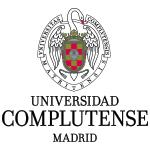Determinación de los tejidos y medios de elección para la confirmaciónmicrobiológica de los resultados serológicos de las campañasde control de Brucella melitensis en el ganado ovino
Artículo de investigación publicado en Archivos de Medicina Veterinaria
1 de junio de 2010
Slaughtering seropositive animals in order to control ovine brucellosis requires a microbiological culture as a confirmatory technique. It is necessary to establish the most adequate tissues, due to difficulties involved in performing microbiological techniques in a large number of animals and samples. In this sense, there is a lack of data obtained from naturally infected sheep representatives of the different epidemiological situations, as recommended by OIE. In our study we carried out the necropsy of 92 ewes suspicious to be infected by Brucella and we performed microbiological culture and identification of 10 tissues per animal. Animals were classified according to an epidemiological survey as belonging to chronic brucellosis flocks, active brucellosis flocks and very low prevalence flocks. Results showed differences between flock types and also indicated that the analysis of samples from mammary gland and its lymph nodes was the best way to confirm infection in a suspicious flock. The combined use of Farrell and Thayer Martin media showed the best efficacy
Alvarez L., Duran M., Gomez B., Garrido F., Yustes C., Vendrell J., Dominguez L., Fernandez-Garayzabal JF., Vela AI. y Latre MV.
 | Servicio de Identificación y Caracterización Microbiana (ICM). Centro de Vigilancia Sanitaria Veterinaria (VISAVET). Universidad Complutense (UCM). |
 | Departamento de Sanidad Animal. Facultad de Veterinaria. Universidad Complutense (UCM). |
| Departamento de Ingeniería Agroalimentaria y Biotecnología (DEAB). Universitat Politècnica de Catalunya (UPC). | |
| Laboratorio de Salud Ambiental y Alimentaria. Departamento de Salud. Generalitat de Catalunya. | |
| Departamento de Patología Animal. Facultad de Veterinaria. Universidad de Zaragoza (UNIZAR). | |
